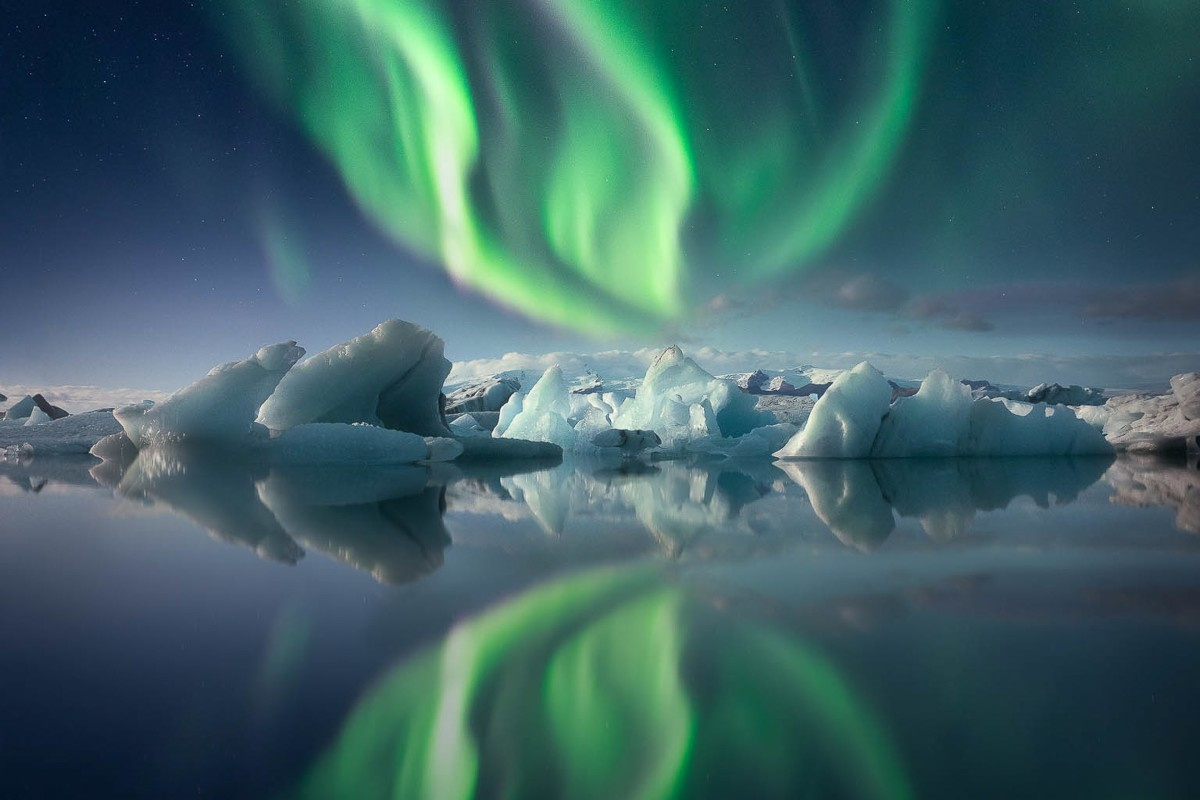Auroras: Northern Lights
Peter Bui. 04/03/2021

Chances are, you’ve watched “The Polar Express”. If so, do you remember the bright colorful ribbons in the dark sky? In case you’re not familiar with “The Polar Express”, have you ever seen a picture of a prismatic ribbon across a night sky, specifically in areas where it’s cold? Well, those lights are called auroras.
Auroras, or polar lights, are a natural phenomenon characterized by a display of colored light in the sky. This event is caused by a process involving solar wind. Solar wind is the outward expansion of plasma from the sun. The plasma is heated to the extent that the sun’s gravity cannot hold it in anymore. This solar wind then travels the Earth and enters its magnetic field before reaching the ionosphere, the layer of the atmosphere that contains the highest concentration of ions and free electrons. The energy that is released as a result of this collision creates the spectral wonder around the Northern and Southern poles: an aurora. Because auroras can only be visible at the Northern and Southern poles, they are unique and seeing them is often a once-in-a-lifetime experience.
Auroras have many different names, other than polar lights. In the Northern pole, they can be called northern lights, and in the Southern pole, they are often called southern lights. The scientific name of auroras is aurora borealis. Aurora comes from the Latin word for “dawn,” as well as the goddess of dawn in Roman mythology.
What causes the colors and patterns of auroras? There are various types of ions and atoms that collide with the atmosphere, resulting in a variety of patterns. The forms resulted from this variety can include ripples, “pulsating globs” and steady glows. The altitude affects the colors of the auroras, known as the aurora’s spectrum. This is because the particles from outer space collide with different gasses at different heights, resulting in different colors. Blue, violet and red colors are produced below 60 miles, and bright green between 60 and 150 miles. Above 150 miles, ruby red colors are seen. There is an infinite variety of shapes, colors, brightness and rays an aurora can form.
The magic of auroras is only visible at specific times. Auroras are always there, but they’re not as visible at certain times. In some places, such as Abisko, auroras are visible for almost 24 hours a day during winter. In other places, it’s rarer. Of course, auroras are only limited to viewing in the Northern and Southern poles. Darkness is vital for auroras to be visible, and they can be seen from late August to early April when the sky satisfies this condition. There are also aurora forecasts for people enthusiastic about seeing the spectacle for themselves.
However, the beauty of auroras comes with a price. Auroras can actually be potentially dangerous to the atmosphere. To make a point clear, they have absolutely no negative impact on humans watching from below whatsoever, but the technology and buildings at a higher elevation can be affected by the electrically charged particles that auroras cause. Auroras disturb the atmosphere that they reside in. They can also disrupt communication from radios, signals and so on. The magnetic energy released by solar wind can blow out electricity. When auroras are active, the Earth’s atmosphere expands.
Auroras are beautiful and amazing, despite their negative factors. It’s quite an interesting phenomenon with interesting facts! Although they exist in the sky, sometimes they can come relatively close to the surface of the earth. Did you know that the closest the northern lights have ever come to Earth is 80 kilometers above the surface? To give a little visual aid, 80 kilometers is roughly 50 miles, whereas the atmosphere is 6,214 miles up. Did you know that the International Space Station (ISS) is at the same altitude as the auroras, so they can see the auroras from the side? Multiple planets have auroras, including Jupiter, Saturn, Uranus and Neptune. Southern lights aren’t nearly as popular as northern lights, although they’re nearly the same, because the areas that feature southern lights don’t have much landmass.
In conclusion, auroras are colorful illusions that are created when the sun’s rays hit the Earth’s ionosphere. They come in a variety of shapes and sizes and can be viewed in the Northern and Southern poles. There are different names for auroras, whether it’s specified by the pole it’s in, or its scientific name. In a way, they can have a negative impact on the atmosphere. Now that you know a little more about auroras, maybe one day, you’ll be among the group of people who love them!
Cover Photo: (CDN)
